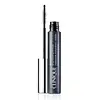Clinique Lash Power Mascara Long-Wearing Formula Versus bareMinerals Lashtopia Mega Volume Mineral Based Mascara
What's inside
What's inside
 Key Ingredients
Key Ingredients

 Benefits
Benefits

 Concerns
Concerns

 Ingredients Side-by-side
Ingredients Side-by-side

Water
Skin ConditioningAcrylates Copolymer
Kaolin
AbrasiveCopernicia Cerifera Wax
PEG-15 Glyceryl Stearate
EmulsifyingSilica
AbrasiveButylene Glycol
HumectantAlcohol
AntimicrobialHydrogenated Rapeseed Alcohol
EmollientBentonite
AbsorbentPolyvinyl Alcohol
Sucrose Distearate
EmollientStearic Acid
CleansingSimmondsia Chinensis Seed Oil
EmollientDimethicone
EmollientSimethicone
EmollientVp/Va Copolymer
Nylon-66
Tocopherol
AntioxidantAminomethyl Propanediol
BufferingAminomethyl Propanol
BufferingXanthan Gum
EmulsifyingChlorphenesin
AntimicrobialSodium Dehydroacetate
PreservativePhenoxyethanol
PreservativeCI 77491
Cosmetic ColorantCI 77492
Cosmetic ColorantCI 77499
Cosmetic ColorantCI 77891
Cosmetic ColorantCI 75470
Cosmetic ColorantCI 19140
Cosmetic ColorantCI 42090
Cosmetic ColorantCI 77007
Cosmetic ColorantCI 77163
Cosmetic ColorantCI 77288
Cosmetic ColorantCI 77742
Cosmetic ColorantCI 77289
Cosmetic ColorantWater, Acrylates Copolymer, Kaolin, Copernicia Cerifera Wax, PEG-15 Glyceryl Stearate, Silica, Butylene Glycol, Alcohol, Hydrogenated Rapeseed Alcohol, Bentonite, Polyvinyl Alcohol, Sucrose Distearate, Stearic Acid, Simmondsia Chinensis Seed Oil, Dimethicone, Simethicone, Vp/Va Copolymer, Nylon-66, Tocopherol, Aminomethyl Propanediol, Aminomethyl Propanol, Xanthan Gum, Chlorphenesin, Sodium Dehydroacetate, Phenoxyethanol, CI 77491, CI 77492, CI 77499, CI 77891, CI 75470, CI 19140, CI 42090, CI 77007, CI 77163, CI 77288, CI 77742, CI 77289
Water
Skin ConditioningGlyceryl Stearate
EmollientCopernicia Cerifera Wax
Ricinus Communis Seed Oil
MaskingAcrylates Copolymer
Vp/Hexadecene Copolymer
Cetearyl Alcohol
EmollientGlycerin
HumectantPolyvinyl Alcohol
Microcrystalline Wax
Emulsion StabilisingEthylhexylglycerin
Skin ConditioningLecithin
EmollientAscorbyl Palmitate
AntioxidantTocopherol
AntioxidantCeteth-10 Phosphate
CleansingDicetyl Phosphate
EmulsifyingCitric Acid
BufferingSodium Hydroxide
BufferingSodium Citrate
BufferingBenzyl Alcohol
PerfumingPotassium Sorbate
PreservativeSodium Dehydroacetate
PreservativeDehydroacetic Acid
PreservativeBHT
AntioxidantPhenoxyethanol
PreservativeIron Oxides
CI 77491
Cosmetic ColorantCI 77492
Cosmetic ColorantCI 77499
Cosmetic ColorantWater, Glyceryl Stearate, Copernicia Cerifera Wax, Ricinus Communis Seed Oil, Acrylates Copolymer, Vp/Hexadecene Copolymer, Cetearyl Alcohol, Glycerin, Polyvinyl Alcohol, Microcrystalline Wax, Ethylhexylglycerin, Lecithin, Ascorbyl Palmitate, Tocopherol, Ceteth-10 Phosphate, Dicetyl Phosphate, Citric Acid, Sodium Hydroxide, Sodium Citrate, Benzyl Alcohol, Potassium Sorbate, Sodium Dehydroacetate, Dehydroacetic Acid, BHT, Phenoxyethanol, Iron Oxides, CI 77491, CI 77492, CI 77499
 Reviews
Reviews

Ingredients Explained
These ingredients are found in both products.
Ingredients higher up in an ingredient list are typically present in a larger amount.
Acrylates Copolymer is used as a film-forming agent and texture enhancer.
After applied, Acrylates Copolymer forms a thin film cover that helps skin feel more soft. It can help sunscreens become more water-resistant.
It is also used to make a product more thick.
Learn more about Acrylates CopolymerCi 77491 is also hydrated iron III oxide. It's sole purpose is to give a red/pink hue to products.
Iron III oxides are classified as inorganic chemicals for coloring.
Synthetically created Ci 77491 is considered safer than those naturally found. This is because the synthetically created version may contain less impurities. Iron oxides are generally non-toxic and non-allergenic.
Learn more about CI 77491Ci 77492 is also hydrated iron III oxide. It's sole purpose is to give a yellow hue to products.
Iron III oxides are classified as inorganic chemicals for coloring.
Synthetically created Ci 77492 is considered safer than those naturally found. This is because the synthetically created version may contain less impurities. Iron oxides are generally non-toxic and non-allergenic.
Learn more about CI 77492Ci 77499 is also hydrated iron III oxide. It is created from mixing red and black iron oxides. This helps give shades of darkness to a product.
Iron III oxides are classified as inorganic chemicals for coloring.
Copernicia Cerifera Wax comes from a palm tree native to Brazil; another name for this ingredient is Carnauba Wax.
This ingredient is used to thicken texture and also leaves behind a film when applied.
Fun fact: This wax has the highest melting point of all natural waxes and low solubility.
Learn more about Copernicia Cerifera WaxPhenoxyethanol is a preservative that has germicide, antimicrobial, and aromatic properties. Studies show that phenoxyethanol can prevent microbial growth. By itself, it has a scent that is similar to that of a rose.
It's often used in formulations along with Caprylyl Glycol to preserve the shelf life of products.
We don't have a description for Polyvinyl Alcohol yet.
This ingredient is a preservative with antimicrobial properties. It is the sodium salt of dehydroacetic acid.
It is especially effective at preventing bacterial and fungal growth in low concentrations.
Tocopherol (also known as Vitamin E) is a common antioxidant used to help protect the skin from free-radicals and strengthen the skin barrier. It's also fat soluble - this means our skin is great at absorbing it.
Vitamin E also helps keep your natural skin lipids healthy. Your lipid skin barrier naturally consists of lipids, ceramides, and fatty acids. Vitamin E offers extra protection for your skin’s lipid barrier, keeping your skin healthy and nourished.
Another benefit is a bit of UV protection. Vitamin E helps reduce the damage caused by UVB rays. (It should not replace your sunscreen). Combining it with Vitamin C can decrease sunburned cells and hyperpigmentation after UV exposure.
You might have noticed Vitamin E + C often paired together. This is because it is great at stabilizing Vitamin C. Using the two together helps increase the effectiveness of both ingredients.
There are often claims that Vitamin E can reduce/prevent scarring, but these claims haven't been confirmed by scientific research.
Learn more about TocopherolWater. It's the most common cosmetic ingredient of all. You'll usually see it at the top of ingredient lists, meaning that it makes up the largest part of the product.
So why is it so popular? Water most often acts as a solvent - this means that it helps dissolve other ingredients into the formulation.
You'll also recognize water as that liquid we all need to stay alive. If you see this, drink a glass of water. Stay hydrated!
Learn more about Water